- for reservations at least a week before sailing from Lombok to Komodo boat 4 days 3 nights
- Temporarily traveling to Komodo Island from Lombok by cruise boat, waiting for weather conditions and local government
Komodo Dragons: Anatomy, Behavior, Diet, Venom and bacteria
3 August 2025 166x Adventure, Komodo Boats Tour, Tips, Travel
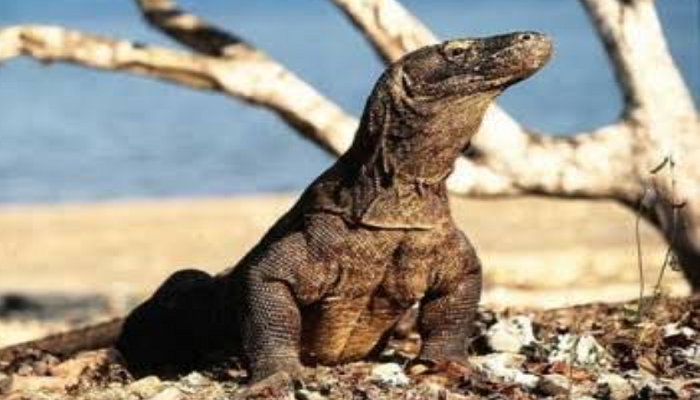
Komodo dragon (Varanus komodoensis)
The Komodo dragon, or more fully the Komodo dragon (Varanus komodoensis), is a large species of monitor lizard found on the islands of Komodo, Rinca, , Gili Motang, and Gili Dasami in Flores East Nusa Tenggara Province, Indonesia. The natives of Komodo Island also call this animal ora (land crocodile), although it is not a crocodile.
The Komodo dragon is the largest species in the Varanidae family and the largest lizard in the world, with an average length of 2-3 meters and a weight of up to 100 kg. Komodo dragons are apex predators in their habitat, as no other large carnivorous animals are known to exist in any geographic region.
Their large bodies and fearsome reputation have made them one of the most famous animals in the world. Today, the Komodo dragon’s natural habitat has been shrinking due to human activity, leading the IUCN to list the Komodo dragon as a vulnerable species. The Komodo dragon has been designated a protected species by the Indonesian government, and its habitat has been designated a national park, Komodo National Park, established to protect it.
Anatomy and Morphology
A wild adult Komodo dragon typically weighs around 70 kg, but captive Komodo dragons often weigh much more. The largest wild specimen ever found reached 3.13 meters in length and weighed around 166 kg, including the weight of undigested food in its stomach. Komodo dragons have tails as long as their bodies. Although the Komodo dragon is the largest lizard in the world, it is not the longest species. The record for body length (excluding weight) is held by the Papuan monitor lizard (Varanus salvadorii). Male Komodo dragons are larger than females, with skin ranging in color from dark gray to brick red, while females are typically greenish-brown and have small yellow spots on their throats. Juvenile Komodo dragons are more varied in color, with yellow, green, and white on a black background.
This Indonesian source credits Walter Auffenberg with measuring a Komodo dragon that reached 3.50 meters in length and weighed 250 kilograms.
In the mouth of an adult Komodo dragon, there are approximately 60 sharp, serrated teeth, approximately 2.5 cm long and coated with iron, which are often shed or removed. Komodo dragons have long, yellowish-brown, forked tongues. Komodo saliva is a topic of much discussion, as many consider it to be as poisonous as snake or lizard venom. It is even believed that there is no cure to prevent or neutralize this poison. However, this has been a long-standing debate among animal experts worldwide.
Physiology
Komodo dragons can see up to 300 meters away, but because their retinas only contain cone cells, they cannot see well in the dark. They can distinguish colors but are less able to distinguish between stationary objects. Komodo dragons lack hearing, although they do have ear canals.
Komodo dragons, like most squamates, use their tongues to smell their prey. The Komodo dragon’s tongue captures airborne odor particles and transfers them to an organ in the roof of its mouth called a Jacobson’s organ, which analyzes these odor signatures. With the help of the wind and its habit of turning its head from side to side while walking, the Komodo dragon can detect carrion from 4 to 9.5 kilometers away. The Komodo dragon’s nostrils function only for breathing and not for smelling, as it lacks a receptor membrane in its nose. Komodo dragons also lack taste buds on their tongues, with only a few taste nerve endings in the throat.
Komodo dragons were once thought to be deaf when research found that whispering, raising their voices, and screaming had no effect on them. This was later disproved when Joan Proctor, an employee at ZSL London Zoo, trained a Komodo dragon to call out for food, even when she was out of sight.
Behavior
Wild Komodo dragons are found only in Indonesia, in East Nusa Tenggara, specifically on the islands of Komodo, Rinca, and several small surrounding islands, as well as on the west coast of Flores. Komodo dragons‘ habitats are open grasslands (savannas) and scrub forests, sometimes also along the coast. Komodo dragons are active from midday to late afternoon, but seek shelter when the temperature is very hot.
Komodo dragons are solitary animals and only gather together when feeding or breeding. These monitor lizards can run fast, up to 20 km/h, for short distances. Komodo dragons are also adept swimmers, capable of diving to depths of 4.5 meters, and are adept at climbing trees using their powerful claws. To catch prey out of reach, Komodo dragons can stand on their hind legs and use their tails for support. As Komodo dragons age and grow in size, they increasingly use their claws as weapons, as their large size makes it difficult to climb trees.
For shelter, Komodo dragons can dig burrows 1–3 meters wide using their powerful forelimbs and claws. Due to their size and habit of sleeping in burrows, Komodo dragons can conserve body heat during the night and reduce their basking time the following morning.
Diet
Komodo dragons are carnivores. However, they primarily feed on carrion. Research indicates that Komodo dragons hunt live prey by sneaking up on prey and then suddenly attacking it. Once the prey is within reach, the Komodo dragon attacks by biting its underside or throat. Komodo dragons locate their prey using their tongues, which can detect the scent of dead or dying animals from a distance of up to 9.5 kilometers.
Komodo dragons eat their prey by tearing large chunks of meat and swallowing them whole, while their front legs support the prey’s body. Komodo dragons sometimes devour prey as small as goats in one go. Saliva in the Komodo dragon’s mouth helps it swallow its prey. However, the swallowing process can be lengthy, typically taking 15–20 minutes to swallow a goat. Komodo dragons sometimes try to speed up the swallowing process by pressing the flesh against a tree or rock to force it down their esophagus. To avoid airway obstruction when swallowing, Komodo dragons breathe through a small tube under their tongue, which connects directly to their lungs. Their jaws can open freely thanks to their flexible skull muscles, allowing them to devour large prey weighing up to 80% of their own body weight in a single meal. Adult Komodo dragons prey on small reptiles (including their own species), wild boar, goats, deer, horses, and water buffalo. Juveniles, on the other hand, prey on insects, eggs, mammals, and small reptiles.
After eating, Komodo dragons drag their overfed bodies, seeking open spaces to bask and speed up digestion. Otherwise, the food could rot in their stomachs and poison their bodies. Due to their slow metabolism, large Komodo dragons can survive on only about 12 meals a year, or once a month. After digesting the meat, the Komodo dragon regurgitates the remains of its prey’s horns, hair, and teeth in clumps mixed with foul-smelling mucus. The Komodo dragon then rubs its face on the ground or bushes to remove any remaining mucus from its mouth.
When feeding in groups, the largest Komodo dragon usually eats first, followed by smaller ones. The largest male displays dominance through body language and hisses, which are then responded to by the smaller males, demonstrating their recognition of the larger Komodo dragon’s dominance. Komodo dragons of equal size may engage in a fight, standing on their hind legs and then striking and pushing with their front legs until one admits defeat and retreats. Sometimes the loser is killed in the fight and eaten by the victor.
Komodo dragons also occasionally prey on humans and corpses dug from shallow graves. This habit led the inhabitants of Komodo Island to avoid sandy soil and prefer to bury their bodies in clay, covering the top with stones to prevent the Komodo dragons from digging. Some also suspect that Komodo dragons evolved to prey on the pygmy elephant Stegodon that once inhabited Flores. Komodo dragons have also been known to startle and frighten pregnant female deer, hoping to prey on the miscarriage and the dead fetuses, a behavior also seen in large predators in Africa.
Venom and bacteria
In late 2005, researchers from the University of Melbourne, Australia, concluded that the Perentie monitor lizard (Varanus giganteus) and other monitor lizards, as well as lizards in the Agamidae family, likely possess some form of venom. It had previously been known that bite wounds from these animals were highly susceptible to infection due to the bacteria that live in their mouths, but these researchers demonstrated that the immediate effects of these bites were caused by the introduction of moderate-strength venom. These researchers observed wounds on human hands from the bites of Varanus varius, V. scalaris, and Komodo dragons, and all showed similar reactions: rapid swelling within minutes, impaired blood clotting, pain extending to the elbow, and symptoms that persisted for several hours.
A gland containing highly toxic venom was removed from the mouth of a Komodo dragon at the Singapore Zoo, confirming the researchers’ confirmation of the Komodo dragon’s venom. The most deadly bacteria in Komodo dragon saliva is thought to be Pasteurella multocida.
Besides containing venom, Komodo dragon saliva also contains a variety of deadly bacteria; more than 28 Gram-negative and 29 Gram-positive bacteria have been isolated from this saliva. These bacteria cause septicemia in their victims. If a Komodo dragon’s bite doesn’t kill its prey immediately and the victim escapes, the unlucky victim will typically die within a day or a week from infection. Because Komodo dragons are likely immune to their own microbes, much research is being conducted to find antibacterial molecules in the hope of using them for human treatment.
Reproduction
The Komodo dragon’s mating season typically occurs between May and August. During this period, male Komodo dragons often fight with other males for females and territory. Two males “wrestle” with each other while standing on their hind legs, pushing and striking each other with their front legs. The defeated Komodo dragon falls and becomes “locked” to the ground. Both males may vomit or defecate as they prepare to fight.
The victorious Komodo dragon will stick his long tongue out at the female to gauge her receptivity. Female Komodo dragons are antagonistic and fight with their teeth and claws during the initial courtship phase. Subsequently, males must maintain complete control of the female during copulation to avoid injury. During mating, males rub their chins against the female, accompanied by vigorous back scratches and licking. Copulation occurs when the male inserts one of his hemipenes into the female’s cloaca. Komodo dragons are monogamous and form “pairs,” a rare trait for lizards.
Female Komodo dragons typically lay their eggs in holes in the ground, depressions in cliff faces, or abandoned nesting mounds of orange-footed scrubflies. However, Komodo dragons prefer to keep their eggs in abandoned nests. The average Komodo dragon nest contains 20 eggs. The female lies on top of the eggs to incubate and protect them until they hatch after 7–8 months of incubation.
The hatching process is a grueling endeavor for the young Komodo dragons, who emerge from their eggshells after tearing them open with an egg tooth that falls out after the laborious task is complete. After successfully breaking open the eggshell, the young Komodo dragons can lie in their shells for several hours before beginning to dig out of their nests. Upon hatching, these young are highly vulnerable to predators.
Young Komodo dragons spend their first years in trees, where they are relatively safe from predators, including cannibalistic adults, which sometimes prey on young monitor lizards they successfully hunt. Komodo dragons take three to five years to mature and can live for over 50 years.
Parthenogenesis
In addition to normal reproduction, there are several examples of female Komodo dragons producing offspring without the presence of a male (parthenogenesis), a phenomenon also known to occur in several other reptile species, such as Cnemidophorus.
“Sungai,” a Komodo dragon at London Zoo, eggs laid in early 2006 after being separated from a male for over two years. Scientists initially thought that this Komodo dragon could store sperm from previous matings with males, an adaptation known as superfecundation.
On December 20, 2006, it was reported that “Flora,” a Komodo dragon living at Chester Zoo, England, was the second Komodo dragon known to produce eggs without fertilization. She laid 11 eggs, seven of which hatched.
Researchers from the University of Liverpool in northern England conducted genetic tests on three eggs that failed to hatch after being transferred to an incubator, and confirmed that “Flora” had not had any physical contact with a male Komodo dragon. Following this surprising discovery, tests were conducted on “River’s” eggs and revealed that they, too, were produced without external fertilization.
Komodo dragons have a ZW chromosomal sex determination system, not an XY system. “Flora’s” offspring, which were male, showed several things happening: Flora’s unfertilized eggs were initially haploid, then duplicated their own chromosomes to become diploid. This suggests that she did not produce diploid eggs, as would occur if one of the meiotic reduction divisions in her ovaries failed.
When a female Komodo dragon (having ZW sex chromosomes) produces offspring in this way, she inherits only one of her chromosome pairs, including one of her two sex chromosomes. This single set of chromosomes is then duplicated in the eggs, which develop parthenogenetically. Eggs that receive a Z chromosome will become ZZ (male), while those that receive a W chromosome will become WW and fail to develop.
It is suspected that this reproductive adaptation allows a female to enter an isolated ecological niche (such as an island) and produce male offspring through parthenogenesis. Through mating with their offspring, these animals can then establish a sexually reproductive population, producing both male and female offspring. While this adaptation is beneficial, zoos should be wary of parthenogenesis, as it may reduce genetic diversity.
On January 31, 2008, the Sedgwick County Zoo in Wichita, Kansas, became the first zoo to document parthenogenesis in Komodo dragons in the Americas. The zoo housed two adult female Komodo dragons, one of which laid 17 eggs on May 19-20, 2007. Only two eggs were concentrated and hatched due to space issues; the first hatched on January 31, 2008, followed by the second on February 1, 2008. Both hatched lazy.
Evolution
The Komodo dragon’s evolutionary development began with the genus Varanus, which appeared in Asia around 40 million years ago and then migrated to Australia. Around 15 million years ago, the meeting of the Australian and Southeast Asian continental plates allowed the monitor lizards to reverse migration to the region now known as the Indonesian archipelago. Komodo dragons are believed to have evolved from their Australian ancestors around 4 million years ago, then crossed over and spread eastward as far as Timor Island. Changes in sea level since the Ice Age have reduced the Komodo dragon’s distribution, and they are now found only on a few islands.
Komodo and Humans
Discovery Komodo dragons were first documented by Europeans in 1910.
Their popularity spread after 1912, when Pieter Antonie Ouwens, director of the Zoological Museum in Buitenzorg (now Bogor), published a paper on the Komodo dragon after receiving photographs and skins of the reptile. The presence of the Komodo dragon was a driving factor in W. Douglas Burden’s 1926 expedition to Komodo Island. After returning with 12 preserved specimens and two live Komodo dragons,
this expedition inspired the 1933 film King Kong.[47] W. Douglas Burden was the first to coin the name “Komodo dragon” to this animal. Three of the Komodo dragon specimens he obtained were preserved and became exhibits that remain at the American Museum of Natural History.
Research
Recognizing the dwindling numbers of these animals in the wild, scientists and international organizations have banned the hunting of Komodo dragons and limited the number of animals taken for scientific research.
Conservation
The Komodo dragon is a vulnerable species, categorized as Vulnerable on the IUCN Red List. Approximately 4,000–5,000 Komodo dragons are estimated to remain in the wild. This population is limited to the islands of Rinca (1,300), Gili Motang (100), Gili Dasami (100), Komodo (1,700), and Flores (possibly around 2,000). However, there is concern about this population because it is estimated that only 350 fertile, breeding females remain. Because of this concern, in 1980 the Indonesian government established the Komodo National Park to protect the Komodo dragon population and its ecosystem on several islands including Komodo, Rinca, and Padar. Later, the Wae Wuul and Wolo Tado Nature Reserves were also established on Flores Island to help preserve the Komodo dragon. However, there is evidence that the Komodo dragons have, at least in part, become accustomed to human presence. These Komodo dragons are accustomed to being fed livestock carcasses, as an attraction to attract tourists at several tourist locations. Volcanic activity, earthquakes, habitat destruction, fires (the Komodo dragon population on Padar Island was nearly wiped out due to a natural fire there), reduced prey, increased tourism, and poaching have made Komodo dragons increasingly vulnerable to extinction. CITES (the Convention on International Trade in Endangered Species) has made the trade of Komodo dragons, both their skins and other parts, illegal.
Although rare, Komodo dragons have been known to kill humans. On June 4, 2007, a Komodo dragon attacked an eight-year-old boy. The boy later died from severe hemorrhaging. This was the first recorded fatal attack in 33 years.
Captivity
The Komodo dragon has long been a fascinating spectacle in various zoos, primarily due to its size and reputation, which have made it so popular. However, it is rarely exhibited in zoos, as it is susceptible to infections and parasitic diseases, and does not breed easily.
The first Komodo dragon was exhibited at the Smithsonian Zoo in 1934, but it only survived for two years. Efforts to domesticate these reptiles continued, but the lifespan of these animals in captivity was limited, averaging only five years at the zoo. The research conducted by Walter Auffenberg, later published in the book “The Behavioral Ecology of the Komodo Monitor,” ultimately made it possible to keep and breed this endangered species in captivity.
Many captive Komodo dragons have been observed to exhibit tame behavior for a period of time. On several occasions, handlers have reportedly managed to bring Komodo dragons out of their enclosures to interact with visitors, including children, without harm to the visitors.[55][56] Komodo dragons may be able to recognize individuals. Ruston Hartdegen of the Dallas Zoo noted that his captive Komodo dragons reacted differently when confronted by a familiar handler, a more or less familiar handler, or a complete stranger.
Research on captive Komodo dragons demonstrates that these animals enjoy play. A study of Komodo dragons pushing shovels left behind by their handlers clearly showed that the animals were attracted to the sound the shovel made as it moved along the rocky surface. A young female Komodo dragon at the National Zoo in Washington, D.C., enjoyed grabbing and shaking various objects, including statues, drink cans, plastic circles, and blankets. She also enjoyed sticking her head into boxes, shoes, and other objects. The Komodo dragon was not incapable of distinguishing these objects from food; she only ate them if they were smeared with rat blood. This playful behavior can be compared to mammalian play.
Another account of Komodo dragons’ playfulness comes from the University of Tennessee. A young Komodo dragon named “Kraken” plays with plastic bracelets, shoes, buckets, and cans, pushing them around, banging them, and carrying them in his mouth. “Kraken” treats these objects differently than he treats his food.
Even seemingly docile Komodo dragons can become unexpectedly aggressive, especially when their territory is invaded by strangers. In June 2001, a Komodo dragon seriously injured Phil Bronstein—executive editor of the San Francisco Chronicle and ex-husband of actress Sharon Stone—when he entered the animal’s enclosure at the invitation of its keeper. Bronstein was bitten on his bare foot by the keeper after the keeper advised him to take off his white shoes, fearing they might attract the Komodo dragon’s attention. Although the man survived, he required surgery to reattach a damaged tendon.
Other Articles: Komodo Village: Meet Earth’s Most Dangerous Lizard Up Close
Maybe you are interested in reading the following article:
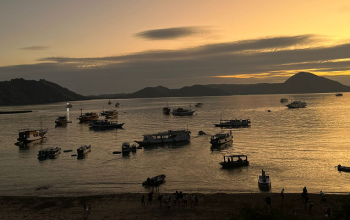
How To Get’s Komodo Island from Bali
How to reach komodo island from bali Usually, there are four ways to get to Komodo Island Those are some information and tips on how to reach Komodo Island from Bali. Other article you must know about: Where is Labuan Bajo? Your Complete Travel Guide read more
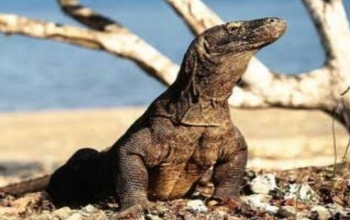
The Life of a Komodo Ranger: Guardian of the Dragon Islands
Komodo tours, komodo tour from lombok, komodo tour package, komodo tour from bali, Komodo dragon island in Indonesia, Lombok Komodo tour, Komodo boat trip, Komodo tour 1 day full trip, Komodo tour 3 days 2 nights, Komodo tour 4D3N, Komodo tour 2D1N, Komodo sailing trip Indonesia, Komodo luxury boat trip, Komodo tour from Labuan Bajo.... read more

Inside a Komodo Village: Sea and Scales, Legend and Life
komodo tours, komodo tour from lombok, komodo tour package, komodo tour from bali, Komodo dragon island in Indonesia, Lombok Komodo tour, Komodo boat trip, Komodo tour 1 day full trip, Komodo tour 3 days 2 nights, Komodo tour 4D3N, Komodo tour 2D1N, Komodo sailing trip Indonesia, Komodo luxury boat trip, Komodo tour from Labuan Bajo,... read more
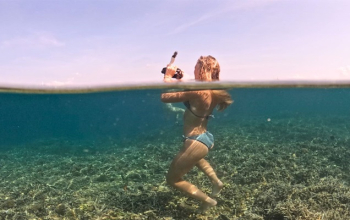
Komodo Island Tour Adventure: Sailing from Labuan Bajo 4D3N
There’s a moment, just before sunrise in Labuan Bajo, when the world feels suspended in golden silence. The harbor, the undisputed gateway to Komodo National Park, begins to hum softly,crews loading fresh water, tropical fruits, and countless stories onto the sturdy, wooden decks. The ocean glitters awake, as if whispering, “Come, it’s time for a..... read more
Contact Us
If you have any questions, please contact us.
-
Hotline
62851-8392-9229 -
Whatsapp
085183929229 -
Email
labuanbajobooking@gmail.com

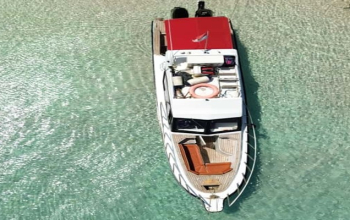

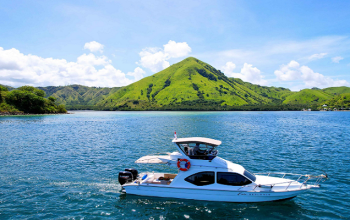
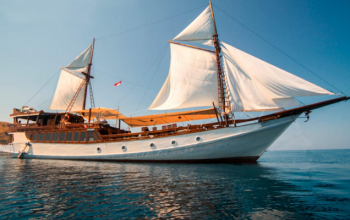
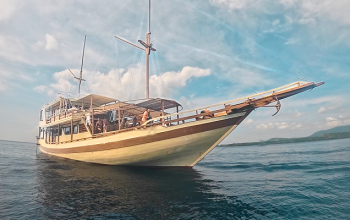
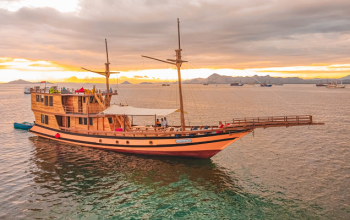

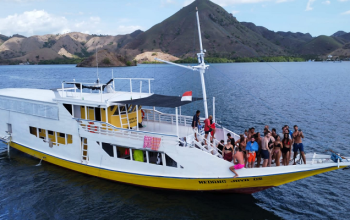
1 comment